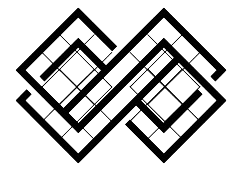Curious about off-grid living but unsure where to begin? Transitioning from a grid-dependent lifestyle to self-sufficiency can seem daunting, but it’s a journey that unfolds in manageable steps. Whether your motivation is to embrace sustainability, cut down on utility bills, or achieve independence, this guide breaks down the transition into clear, actionable stages.
Step 1: Assess Your Current Energy Dependence
Before you begin the transition, understanding your current energy usage is crucial. This will help you pinpoint the areas that require adjustments and establish a baseline for your off-grid goals.
- Track Your Energy Use: Review your utility bills over the past year to determine average consumption in kilowatt-hours (kWh). Tools like energy monitors can provide real-time insights.
- Identify Critical Needs: Categorize your energy consumption into essential (lighting, refrigeration) and non-essential (entertainment systems) uses.
- Consider Regional Factors: Evaluate how climate and geography affect your energy needs. For instance, heating may be a priority in colder areas, while cooling systems are vital in warmer climates.
Why This Matters:
Understanding your starting point ensures that your off-grid system is designed to meet your specific needs without unnecessary overspending.
Step 2: Gradually Reduce Your Dependence on the Grid
Going off-grid doesn’t happen overnight. Begin by making incremental changes that decrease your reliance on centralized utilities.
Start with Solar Power:
- Install a small solar panel system to power specific appliances like outdoor lights or your water heater.
- Experiment with portable solar chargers for personal devices.
Switch to Energy-Efficient Appliances:
- Replace outdated devices with energy-efficient models certified by organizations like ENERGY STAR.
- Opt for LED bulbs, which consume significantly less power than traditional incandescent options.
Optimize Household Practices:
- Incorporate habits like turning off unused lights, unplugging idle electronics, and using natural light during the day.
Step 3: Invest in Off-Grid Essentials
Building a reliable off-grid system requires upfront investment in critical components. Prioritize items that align with your immediate needs and long-term goals.
Renewable Energy Systems:
- Solar Panels: A versatile and scalable option for capturing energy.
- Wind Turbines: Ideal for areas with consistent wind patterns.
- Micro-Hydro Systems: Suitable if your property has access to flowing water.
Energy Storage Solutions:
- Install a battery bank to store renewable energy for cloudy days or nighttime use. Lithium-ion batteries are a popular choice due to their efficiency and longevity.
Water Collection and Purification:
- Set up a rainwater harvesting system with storage tanks and filters.
- Use water purification methods such as UV sterilization or ceramic filters to ensure safe consumption.
Backup Systems:
- Keep a backup generator for emergencies or unexpected high energy demands.
- Stock up on durable hand tools and equipment to maintain independence from electric-powered alternatives.
Step 4: Budget for the Transition
Moving off-grid involves initial costs that vary depending on the complexity of your setup. Budgeting effectively ensures you don’t overspend or neglect key elements.
Calculate Costs:
- Renewable Energy Setup: Research the cost of solar panels, wind turbines, and batteries based on your energy needs.
- Water Systems: Include expenses for tanks, piping, and purification systems.
- Home Modifications: Account for costs like insulation, efficient windows, and other upgrades.
Explore Financial Incentives:
- Check for government rebates and tax incentives for installing renewable energy systems.
- Investigate local programs that support sustainable living initiatives.
Step 5: Embrace Full Off-Grid Living
Once you’ve reduced reliance on the grid and invested in essential systems, take the leap into full off-grid living.
Create a Sustainable Routine:
- Learn to balance energy production with consumption to avoid shortages.
- Adopt sustainable practices like composting, gardening, and reusing materials.
Monitor and Maintain Systems:
- Regularly inspect your renewable energy setup for wear and tear.
- Clean solar panels and replace filters in water systems to maintain efficiency.
Stay Adaptable:
- Be prepared to tweak your setup as seasons change or new technologies emerge.
- Build a community with fellow off-gridders to share insights and resources.
Common Questions
How Much Does It Cost to Go Off-Grid?
The cost can range from $10,000 to $50,000 or more, depending on your energy requirements and chosen systems. Starting with small-scale projects can help spread costs over time.
Do I Need to Move to a Remote Location?
Not necessarily. Many people transition to off-grid living in suburban or even urban settings by focusing on self-sufficiency in energy, water, and waste management.
What Are the Biggest Challenges of Off-Grid Living?
Key challenges include managing energy shortages, adjusting to a minimalist lifestyle, and maintaining systems. Planning and preparation can minimize these obstacles.
Is Off-Grid Living Legal Everywhere?
Laws vary by location. Check zoning regulations, building codes, and water rights in your area to ensure compliance.
Moving Forward with Confidence
Transitioning to off-grid living is a journey that requires careful planning, investment, and adaptability. By following these five steps, you can create a sustainable, independent lifestyle that aligns with your values and goals.
Ready to take the first step? Explore our detailed guides on renewable energy and sustainable systems to kick-start your off-grid journey.
